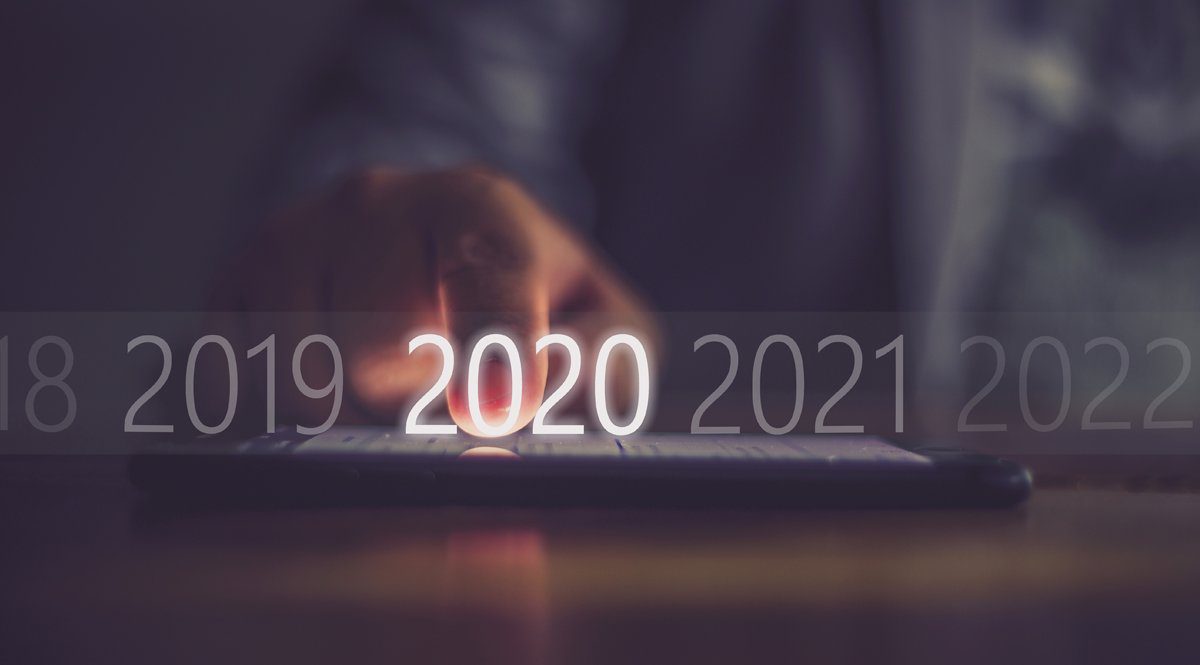COVID-19. Never before has one year been dominated globally by one unifying, terrible issue. It has impacted our health, our daily lives, freedom of movement, our businesses and our politics. 2020 has been the year of the global pandemic.
And as much as we are all looking forward to seeing the end of 2020 and looking ahead to better and hopefully easier days, there is truth in the notion that we learn more from adversity than prosperity.
So we’ve looked at the top 5 things we’ve learnt in the business world in 2020.
1. Strategy can change – fast!
Government departments and businesses all over the world make plans, often on a 3-5 year basis. Huge amounts of effort go into setting the strategic direction, crafting the strategy and communicating the intent to staff and stakeholders. It’s how we all work towards common goals.
Once approved by executive teams and Boards, changing a strategy isn’t always common. But in 2020, that all changed.
When you’re a bank and you suddenly have tens, or even hundreds of thousands, of customers potentially unable to pay their mortgage, you need a very different strategy to normal.
When you operate a luxury lodge and your normally wealthy international customers can’t get on a plane, you need a very different strategy.
When you operate a major healthcare business and health advice is constantly changing, you need a very different strategy.
Mihir Mysore, a leader of McKinsey’s work on crisis response, says knowing when to be flexible and when to commit to choices isn’t a muscle that many organisations have developed in a recent podcast.
He says there are models and data available to help companies make faster strategic decisions based on having enough information. Looking at market exposure, the depth of disruption, the length of disruption and the shape of the recovery are good ways to get a solid picture and allow for fast and good decision making.
It’s about being smarter on the fixed elements of the business strategy, and faster on the components that can flex.
2. People and teams can work differently
Working from home and seeking greater flexibility is nothing new. But the mass exodus of professional workers back to their homes from Sydney, to New York, to London was unprecedented.
With cities around the world in various states of lock down, professionals have in most cases spent as much time working from home as from the office in 2020.
While it’s clear that technology has been the enabler for millions of people to work from the kitchen table, according to a recent digital pulse report from PwC, the other key issue is the skills needed by a virtual workforce.
The report found that the move to a predominantly virtual world exposed gaps in the capabilities of companies and of their people – something that leaders were struggling with before the pandemic. It says however, that a major part of the solution lies in upskilling existing workforces and ensuring ongoing training and learning.
According to Adam Collins, Chief Product Officer at Camms, the linkages between people skills, technology and strategy are often overlooked.
“In companies all over the world there can be issues with different business units acting in siloes. The strategy team does one thing, the IT team looks at the IT and tech needs and the HR team is all about people management,” Adam said.
“But as COVID and this report from PwC shows, those lines are artificial and need to blend for businesses to be successful. It’s not enough to send your teams home with the right tech kit, they need the right training and skills people and technology pieces are strongly linked.
“Businesses with the right software that supports collaboration, that shows different activity across the organisation, and the right mindset to think holistically about the needs of the business and its people, are the ones who have worked better through COVID and will be stronger in 2021.”
3. Communication matters
Communications teams around the world have not only had to work harder but faster than ever before this year. Where in the past there may have been time for a full approval process to get the message just right, in the ever-changing COVID-19 world, time has been a luxury we have not been able to afford.
In many cases, that has changed the style of communication with staff teams, with stakeholders and customers. One of the main things we’ve all learnt, according to LexisNexis, is the importance of transparency and collaboration.
In their article about managing corporate communications during the pandemic, they say:
“In the case of COVID-19, there are as many unknowns as there are facts. Be prepared to be as transparent about what you don’t know as what you do; if you don’t know the answer to a question, say so – then find the answer and follow up.”
They go on to talk about the importance of company alignment to ensure all decision-makers are singing from the same songbook.
“Continue to collaborate closely with other departments – legal, human resources, accounting, sales, the c-suite and beyond – to secure buy-in from across your organisation on key messages, Q&As, company policies and next steps from across your organisation. Identify, align on and train a single company executive to serve as public spokesperson. And remember to establish and clearly articulate where employees, key stakeholders, the media and customers can turn for more information.”
It is all about ensuring your organisation is trusted and working hard to communicate useful information in a timely manner.
4. Technology is more important
Just as we know that global instability and volatility isn’t going away any time soon – even when we all get the COVID-19 vaccination – we also know that technology will continue to play an ever important role in the success of businesses.
The problem of maintaining business operations in an increasingly volatile and complex business environment calls for proactive, integrated solutions encompassing people, data and infrastructure. Organisations should establish well-defined direction from the top level so that there is clarity on how to act when challenges arise.
According to Forbes columnist Steve Culp, risk management is more important than ever in this volatile environment and businesses should be getting better leverage from their technology.
“Emerging technologies such as machine learning and artificial intelligence show great promise in helping risk managers pinpoint specific risks and develop faster responses. Many risk teams, however, have yet to take full advantage of more mature technologies in areas including data, analytics and modelling. Among other benefits, these technologies can reduce the efforts on lower-risk areas and help managers focus their energies on real threats, to critical parts of the organisation.”
According to Adam Collins, Chief Product Officer at Camms, one major change in 2020 has been speed, and businesses looking for more agile software solutions.
“Changing software in the past has sometimes been a big decision, involving layers of decision making, budgeting and implementation. In our experience this year we’ve seen businesses wanting to move much faster and expecting solutions they can plug in and get benefits from the next day. It’s certainly how we’ve been developing our latest risk and strategy releases.”
5. Everything is connected, including risks
Our economies, the planet we share and the lives we lead have never been more connected, and 2020 has shone the spotlight brightly on that truth.
From a business perspective it harks back to an old truth, that the best strategy and risk management happens holistically and at the top level, filtering down throughout your business.
What it really means is that global pandemics, political changes, climate change, the global supply chain – it’s virtually impossible to disentangle these elements and deal with them one by one.
In the Global Risks Report, prepared by the World Economic Forum, leaders are in agreement that climate change, and its associated political, social and economic impacts, is the stand-out long-term risk the world faces.
From COVID-19 to climate change in the years ahead, these huge challenges will be forcing businesses and governments to collaborate and change in ways we have never seen before.
In the commentary around the risks we all face, the key message is that the time is now.
“Waiting for the fog of geopolitical and geo-economic uncertainty to lift before taking action is not a viable option, and would mean missing crucial windows to address pressing issues,” it says.
“The good news is that, despite global divisions, some businesses are committed to looking beyond their balance sheets towards tackling the urgent issues that are looming.”
If your organisation or department needs a faster, more collaborative approach to strategy, people, risk and communication, find out more about the Camms integrated suite of business software. Completely cloud-based and fast to implement for quick returns, visit cammsgroup.com.





